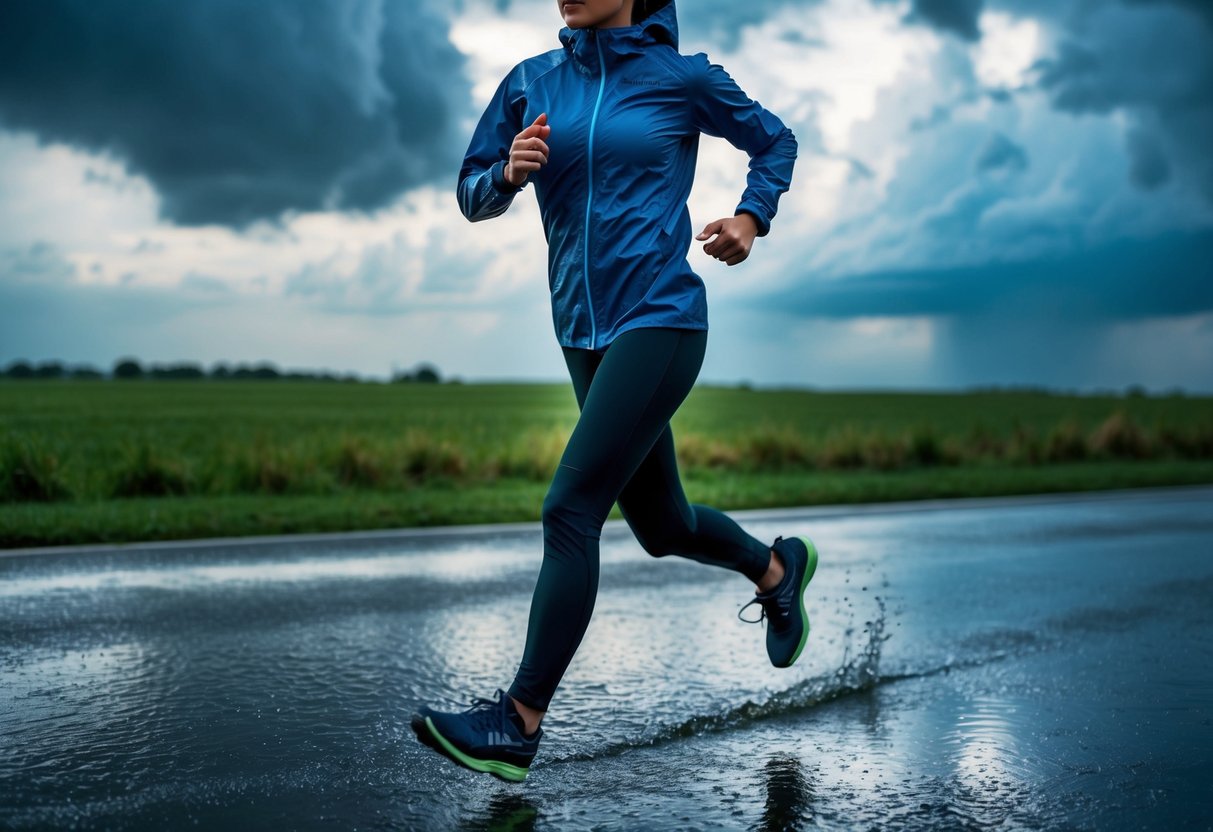
Trail Running Essentials
Trail runners require footwear that can handle rugged terrains and unpredictable weather. Effective waterproof technology and optimal traction are key components that enhance performance on the trails.
Waterproof Trail Shoes Technology
Waterproof trail shoes play a crucial role in keeping runners’ feet dry and comfortable. Many leading brands incorporate materials like Gore-Tex, which effectively repels water while allowing moisture to escape. This technology ensures that feet remain dry, preventing blisters and discomfort. Examples like the Hoka Challenger 7 GTX exemplify these advances, offering both water resistance and breathability.
Some models, such as the Nike Pegasus Trail 4, feature water-repellent uppers without sacrificing flexibility or weight. These shoes often utilize sealed seams and water-tight overlays to provide additional protection. This combination of materials and construction methods means runners can confidently tackle damp trails without worrying about soggy socks.
Selecting Trail Shoes with Ample Traction
Ample traction is essential for navigating uneven and slippery surfaces. Trail shoes are designed with specialized outsoles that feature aggressive patterns and deep lugs. Grippy lugs are crucial for preventing slips on mud, rocks, and loose dirt. Shoes like the Nike Pegasus Trail 4 often come equipped with multidirectional lugs for enhanced grip.
When choosing trail shoes, runners should consider the compound used in the outsole. Durable rubber compounds provide long-lasting traction, even on rough terrain. Hoka Challenger 7 GTX is known for its robust sole, crafted to tackle varying conditions, ensuring a stable and secure footing throughout the run.
Optimizing Foot Comfort and Performance
Footwear designed for all-weather training should provide both comfort and performance. A focus on cushioning, midsoles, and arch support helps ensure a comfortable fit and reduces the risk of injury.
Importance of Cushioning and Midsoles
Cushioning plays a crucial role in enhancing comfort and shock absorption, particularly in environments where the terrain may be unpredictable. Footwear with firm cushioning using materials like EVA foam offers both support and a responsive feel.
The midsole is where the cushioning magic happens. A well-constructed midsole not only provides necessary shock absorption but also contributes to stability during movement. The right balance in midsole design ensures longevity and consistent performance.
Cushioning can vary in firmness to suit different training needs. Customized options cater to whether the focus is on speed, agility, or endurance. Footwear that adapts to foot movements reduces the likelihood of fatigue over prolonged use.
Arch Support and Insoles
Arch support is essential for maintaining proper foot alignment. It helps in distributing weight evenly across the foot, thus preventing undue stress on specific areas. Insoles tailored for specific arch types, whether low, neutral, or high, can alleviate discomfort and stabilize the foot.
Structured insoles add an additional layer of support, furnishing the shoe with improved comfort. Standard insoles might not be enough for everyone. For those seeking specialized support, custom orthotic insoles could be a solution, offering enhanced stabilization and fit.
Choosing the right combination of arch support and insoles helps mitigate potential foot pain. It contributes to a comfortable fit while supporting overall foot health during rigorous, all-weather training. Sound arch support, paired with proper insoles, promotes a seamless training experience.
Evaluating Activewear for Specific Conditions
Selecting the right activewear depends heavily on local weather patterns and specific needs. Considerations for waterproof materials and functional designs such as zippered pockets and elastic waistbands enhance the overall experience, making the gear not only protective but also practical.
For Rainy and Wet Climates
When training in rainy climates, waterproof pants become essential. They help keep moisture away and maintain comfort. Rain pants made from breathable yet waterproof materials prevent overheating during intense workouts. Zippered pockets offer a secure way to store small items, ensuring they stay dry. Fabrics that wick away moisture are crucial to keeping skin dry and comfortable.
A waterproof coat provides an extra layer of protection. It is important to look for features like adjustable hoods and slim-fit designs to minimize bulk. An elastic waistband ensures a snug fit, preventing water from seeping in. Thus, these elements together ensure that the wearer remains dry and comfortable during outdoor activities in the rain.



